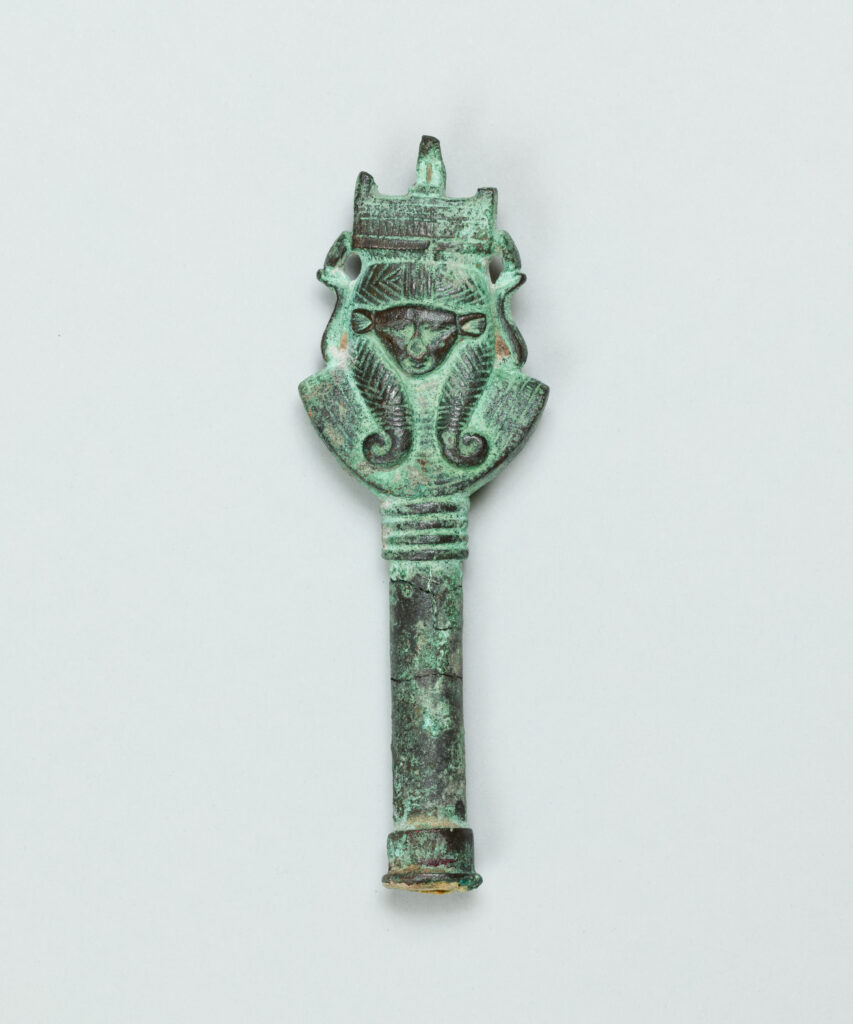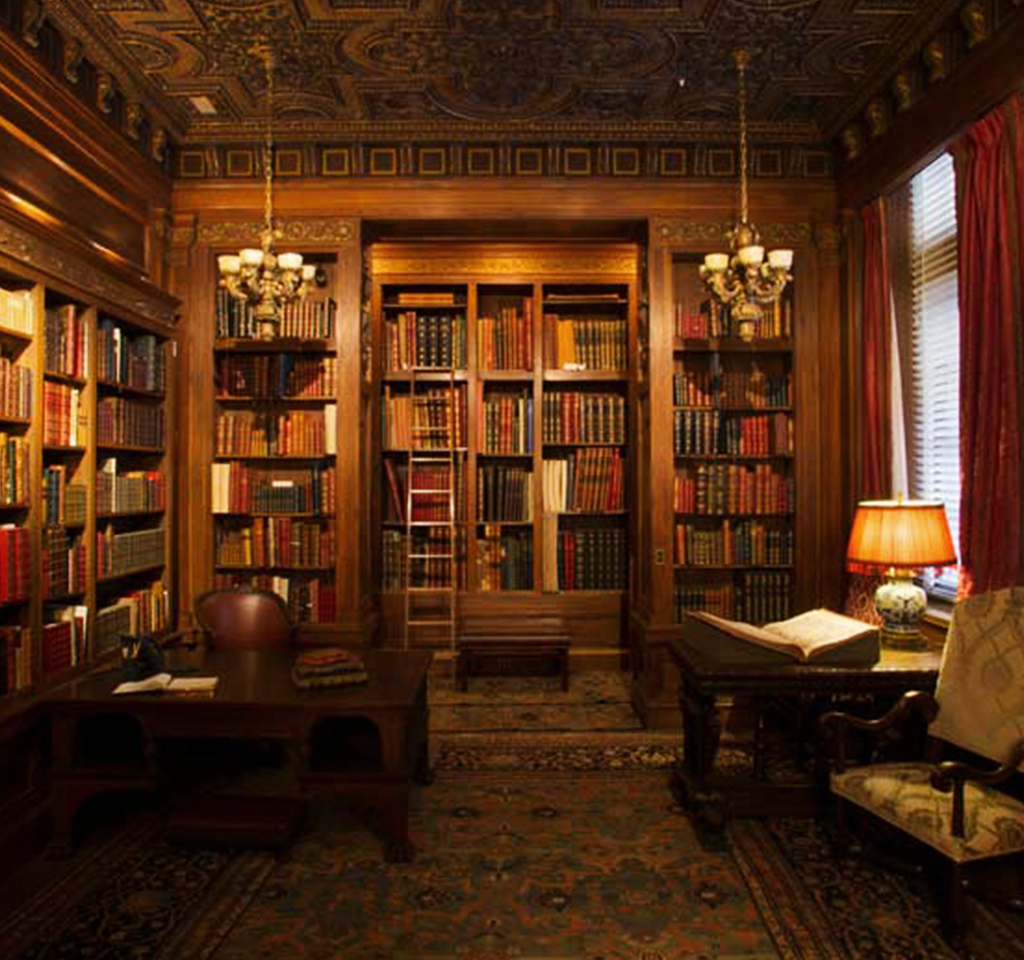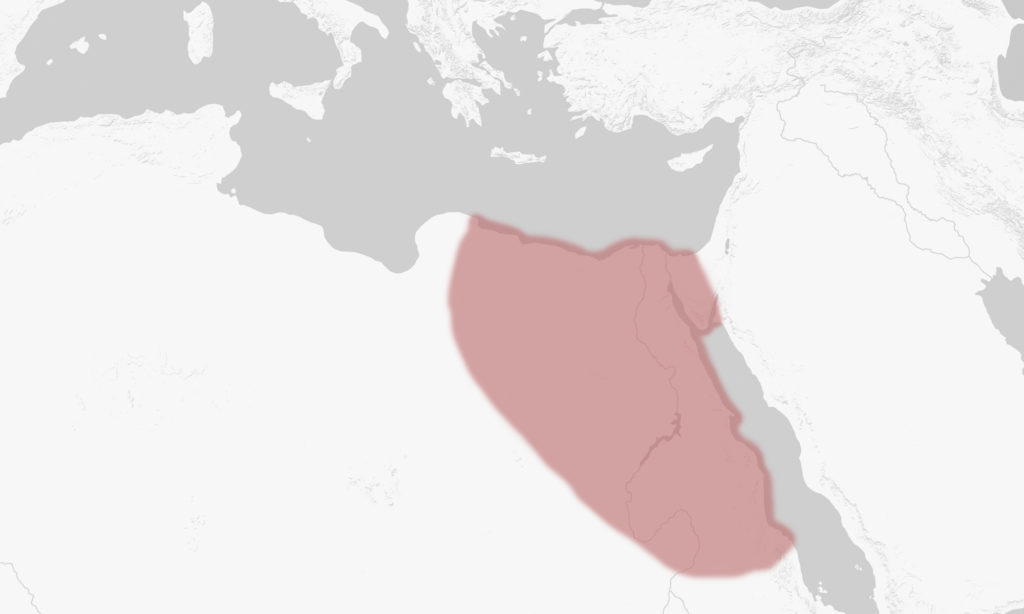
Gift of Miss Susan Dwight Bliss
1963.274The sistrum was an Egyptian musical instrument with metal discs suspended on bars that jangled when shaken, like the zills on the side of a tambourine. It was used in a variety of religious contexts in Egyptian society and was closely associated with the Egyptian goddess Hathor, one of the major deities of the Egyptian pantheon and symbolic mother of the Egyptian pharaohs. While the larger instrument with bangles is missing from this handle, the connection of the sistrum with the worship of Hathor is evident in the depiction of the goddess at the base of the instrument, as on many other sistrums from ancient Egypt. The goddess is recognizable in her characteristic depiction as a woman with a cow’s ears, wearing a distinctive wig. She is flanked on either side by uraeus cobras, a symbol of her close association with her sons, the gods Ra and Horus.
This bronze is one of a group of Egyptian artifacts donated to the Museum by Susan Dwight Bliss (1882–1966). Bliss was the sole heir of the magnificent Manhattan mansion belonging to her parents, wealthy financier George T. and Jeanette Dwight Bliss. During the Gilded Age, the couple (especially Jeanette) were avid American antiquarians. They collected Mediterranean antiquities and European art, amassed a sizable library, and even installed a series of historic interiors in their uptown mansion.
Egyptian antiquity captivated the public imagination on either side of the Atlantic since Napoleon’s campaigns in the region (1798–1801). Large contingents of scientists and scholars accompanied Napoleon’s campaigns, studying the cultures, languages, and histories of the region and excavating many ancient Egyptian sites. Their discoveries, which included the Rosetta stone, were published in lavishly illustrated volumes. Excavations of Egyptian tombs increased throughout the nineteenth century in the wake of this campaign. Among the later excavations, perhaps most famous was the discovery of Tutankhamun’s tomb by the English archaeologist Howard Carter in 1922. Tomb contents regularly found their way into the hands of Western collectors and museums, either as part of legitimate partage agreements or through looting and the antiquities market.
Before 1963, Bliss family collection; 1963, gifted to the Bowdoin College Museum of Art by Susan Dwight Bliss
Collector
Sole heir to wealthy financier George T. (1816–1901) and Jeanette Dwight Bliss (1852–1924), Susan Dwight Bliss was a New York collector and philanthropist. She inherited a sizeable collection of ancient Mediterranean and historic European art from her parents, prominent collectors of the Gilded Age, and continued to collect rare books, manuscripts, and historic art and artifacts herself.

